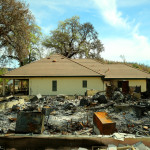Baton Rouge, La. – The population of Louisiana traces its origins back in many directions, with Spanish and French influences dominating. Along the coast, more recent arrivals may speak primarily Vietnamese or other languages.
In fact, it’s estimated that more than 70,000 residents of the 35 parishes designated for federal disaster assistance speak a language other than English. According to census data, the four most prevalent non-English languages spoken in parishes designated for federal assistance are Spanish, French, Chinese and Vietnamese.
However, language is not a barrier to receiving FEMA disaster assistance.
If you or someone you know is non-English speaking, let them know that FEMA has many ways to meet the language needs of survivors. For instance, many FEMA employees are bilingual or multilingual and are able to assist survivors in their primary language during normal encounters in communities, at Disaster Recovery Centers or at public meetings.
As FEMA Disaster Survivor Assistance Teams canvass neighborhoods in designated parishes, they take special note of language needs and work with non-English speaking survivors to help them register.
When a Louisiana resident desires to register for FEMA assistance by phoning 800-621-3362, they can speak with a FEMA employee fluent in their language. However, it is helpful if someone who speaks English can assist the disaster survivor when placing the FEMA call.
American Sign Language (ASL) interpreting services also are available for disaster survivors who are Deaf, hard of hearing or have a speech disability and use TTY to call 800-462-7585 to register. Those who use 711 or Video Relay Service or require accommodations while visiting a Disaster Recovery Center may call 800-621-3362. All disaster recovery centers are accessible and equipped with tools to accommodate disaster survivors who need disability-related communication aids.
ASL interpreters are available at Disaster Recovery Centers open in many places throughout Louisiana; they also are on hand at public meetings where FEMA speakers appear.
###
We urge everyone to continue to use caution in areas where floodwaters remain. Monitor DOTD’s www.511la.org website for updated road closure information. Look for advisories from your local authorities and emergency managers. You can find the latest information on the state’s response at www.emergency.la.gov. GOHSEP also provides information on Facebook and Twitter. You can receive emergency alerts on most smartphones and tablets by downloading the new Alert FM App. It is free for basic service. You can also download the Louisiana Emergency Preparedness Guide and find other information at www.getagameplan.org.
Disaster recovery assistance is available without regard to race, color, religion, nationality, sex, age, disability, English proficiency or economic status. If you or someone you know has been discriminated against, call FEMA toll-free at 800-621-FEMA (3362). For TTY call 800-462-7585.
FEMA’s mission is to support our citizens and first responders to ensure that as a nation we work together to build, sustain, and improve our capability to prepare for, protect against, respond to, recover from, and mitigate all hazards. Follow us on Twitter at https://twitter.com/femaregion6 and the FEMA Blog at http://blog.fema.gov.
The U.S. Small Business Administration (SBA) is the federal government’s primary source of money for the long-term rebuilding of disaster-damaged private property. SBA helps businesses of all sizes, private non-profit organizations, homeowners and renters fund repairs or rebuilding efforts and cover the cost of replacing lost or disaster-damaged personal property. These disaster loans cover losses not fully compensated by insurance or other recoveries and do not duplicate benefits of other agencies or organizations. For more information, applicants may contact SBA’s Disaster Assistance Customer Service Center by calling (800) 659-2955, emailing disastercustomerservice@sba.gov, or visiting SBA’s Web site at www.sba.gov/disaster. Deaf and hard-of-hearing individuals may call (800)877-8339.
###
This article is from –



 SACRAMENTO, Calif. – If Lake and Calaveras County residents receive a letter from the Federal Emergency Management Agency saying they are not eligible for disaster assistance, it is important that they read the letter carefully and then contact FEMA if they have questions or need assistance making an appeal.
SACRAMENTO, Calif. – If Lake and Calaveras County residents receive a letter from the Federal Emergency Management Agency saying they are not eligible for disaster assistance, it is important that they read the letter carefully and then contact FEMA if they have questions or need assistance making an appeal.
